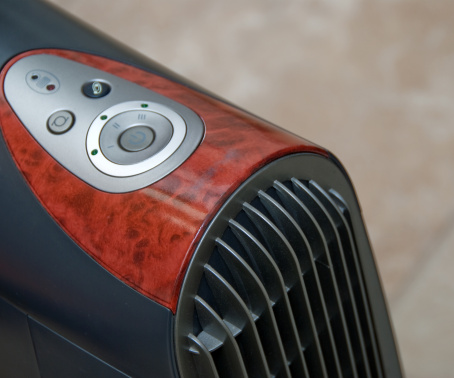As we continue to look at residential comfort trends and indoor air quality, one that continues to grow is the use of indoor air purifiers. Many people with allergies and asthma use them to help clean the air in their home. Below are some common questions associated with air purifiers and how well they work in your home.
Do air purifiers work at cleaning the air in your home?
The truth of the matter is that air purifiers do help remove some airborne particles associated with allergens, but there are limitations. While some indoor pollution can be dealt with by an air purifier, others cannot. The EPA does state that air purifiers can help and they are to be used to supplement other means of cleaning the air in your home. The other way to clean the air in your home is to simply allow circulation of fresh air through your home. You can do this by opening some windows and getting a good cross breeze going.
However, in this day and age of energy efficiency, most modern homes are poorly ventilated. This is because they are sealed to allow little energy (i.e. air) to escape or come in. As such, having air purifiers can help keep the air clean, but from time to time, you will want to give your home a good airing out.
Do air purifiers remove all particles in the air?
While air purifiers will remove some airborne allergens, they will not remove larger particles that often fall onto the floor and into the carpet, which puts them out of reach of the air purifier. Plus, they will not eliminate the need to dust. As such, you will need to keep your microfiber dusters and hepa vacuums to really get to those heavier particles.
Also, air purifiers, generally speaking, will not get rid of odors, nor will they remove and clean out gasses. Again, the best elimination of those is fresh air ventilation.
As a result, the main function of any air purifier is combating only the smaller airborne particles. A good air purifier, even the smaller, portables ones, are 90% effective at reducing smaller particles such as those caused by pet dander and dust mites.
What kind of air pollutants do air purifiers remove?
When it comes to mold, air purifiers are only partially work. While some may remove airborne mold particles from the air, they do not kill mold spores. However, if those spores can get trapped in the filter, it will keep them from circulating around your home. When cleaning the filter, though, you must be careful and properly dispose of it so you do not release these unwanted mold spores back into the air.
When it comes to pet allergies, a lot of the common pet dander will be removed by most air purifiers. However, pet hair itself, will still settle on surfaces. So you will need to clean pet hair, even if you have an air purifier.
As far as hay fever symptoms are concerned, an air purifier will help remove various pollen, fungi, dander and more, but it will largely depend on the model and what you hay fever triggers happen to be. Heavier particles from dust mite feces, insect body parts, and pet dander may still fall to the surfaces. So, to remove those hay fever triggers, you will need to vacuum and dust.
Overall, while some air purifiers may help keep your air clean, they will not, alone, do the full job. They are only effective against smaller particles. To keep your air clean, you will want to take advantage of our warming spring days and let in some fresh air, as well as vacuum and dust periodically.
Keeping your indoor air clean can be challenging. If you do suffer from allergies and hay fever, adding an air purifier may help. Keeping your HVAC systems maintained and replacing your HVAC air filters will go a long way in reducing airborne particles, too. If you suspect your indoor air quality is poor, you may need also need some some air conditioning repair work. We can help by ensuring your HVAC system is working properly, and if your system needs repair, we can take care of that too. Schedule an appointment or call 303-424-1622 for a free systems evaluation.

